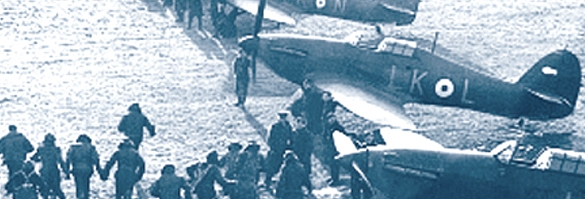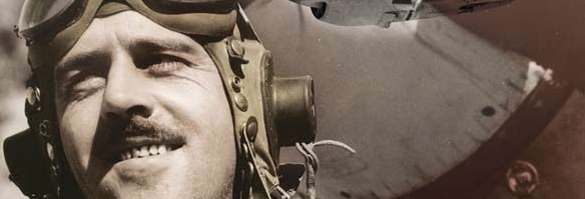Michael McKernan: Gallipoli. A Short History
I have read a few of Michael McKernan’s books. Not all, as some just don’t touch on my areas of interest. I loved All in!, dipped into Here is their Spirit, sobbed through This War Never Ends, was enamoured by The Valley, and considered myself dead privileged when our mutual publisher snuck me a look at the first six chapters of The Strength of a Nation. I then had to wait impatiently until it went to print before I could read the rest. I love Michael’s style. He writes with sympathy and empathy, he simply (but not simplistically) and vividly describes events, and his focus is people-centric. I will admit I have largely ignored the First World War but when I finished The Valley I asked our publisher what Michael was doing next. The reply was a short history of Gallipoli. I quickly sent a note off to Michael saying I was looking forward to that because I felt that his style, if nothing else, might be just what I needed to bring me to a broader First World War interest. I wasn’t wrong.
Gallipoli. A Short History places people centre stage and it succinctly describes events in a clear, accessible way. Michael had doubts about whether this book was needed: he points out that there are already hundreds of books written about Gallipoli (Bill Gammage, at the book’s launch, joked that this was the 451st!) with several million words between them, and Charles Bean was responsible for about 654,800 of them in his two volumes of The Story of Anzac. I would never have come to Gallipoli through Bean—too daunting—or even via the briefer (?!) offering by Les Carlyon’s Gallipoli with its 600-odd pages. Michael acknowledges that he is not writing for scholars. He is writing for people like me, those ‘in the early twenty-first century, most of whom probably have neither the time nor the patience for long and detailed books such as Charles Bean wrote.’ Although he does not state it, he also writes for those who prefer to follow the experiences of a handful of men throughout an account; men whose experiences deserve to be detailed in their own right but also as representatives of the many unknown or unknowable participants.
One of those unknown and unknowable is Jack Fothergill. Michael admits that the evidence is limited and that we can have no real knowledge of what Jack experienced but he has skilfully assembled the few facts of his life, drawn on his own extensive knowledge of Jack’s ‘life-and-times’, and sensitively asked questions to help the reader imaginatively construct Jack’s life. The result is a surprisingly rounded portrait of a man who was killed on Pine Ridge on 25 April 1915—the first day. In the scheme of things, Jack and the many others who died on that day, made little impact on the course of battle. But the impact on his family was publically and privately felt for many years after. Jack Fothergill is representative of all the other Gallipoli unknowns but Charlie Bean and Chaplain Bill McKenzie appear in their own right. Yes, Jack, Bill and Charlie, nicknames and diminutives which demonstrate Michael’s intimacy with these men, and which foster intimacy in the reader and stimulate real concern for what happens to them.
To me, Bill McKenzie’s story is the strongest. Bill felt that it was his personal responsibility to retrieve and bury those who had fallen, even when they had lain in the sun for days. He wrote graphically of his experiences and Michael uses his words well: ‘the smell was terrible. It turned me very sick’. ‘I have never had such a task and hope I never shall again’. But he did. After the war he spoke of how he was ‘completely unstrung and unnerved’ by what he had seen. ‘I had seen so many fine chaps killed...I had buried so many too’. He did so much for his men, both living and dead, that he was awarded the Military Cross for ‘distinguished services in the field’ and unverifiable rumour has it that he was thrice recommended for the Victoria Cross. So loved was he that 7000 people greeted him in Melbourne in early 1918 and, during the 1930s when he attended Anzac Day parades, his hand was often bleeding because every man marching wanted to shake it. His retirement in 1939 was quiet and relatively obscure and his death in 1947 was almost unheralded. Well, Michael has ensured that he is heralded now. (Michael was also instrumental in the donation of Bill McKenzie’s papers to the Australian War Memorial.)
It is often said that you can have no appreciation of Gallipoli and the fighting terrain unless you’ve been there. Many of Michael’s readers haven’t and he knows this, so he draws on his own experience leading battlefield tours and uses descriptions that we can appreciate. The Nek was ‘the size of two or three tennis courts, that’s how small the Nek was’ and yet it saw wave after wave of men rush forward in a futile charge. And afterwards? Michael describes it beautifully:
And now the battlefield fell silent, but for the cries of the wounded in no-man’s land as they settled slowly into the business of dying. Not a single one of them was rescued; they were all beyond help. You stand on that little patch of land today where 326 soldiers are buried, of whom only ten are identified. You weep for the madness of what was attempted and the gallantry of those who believed they must go where their duty took them. You feel anger welling up and you want to throttle the murdering bastard who thought up this attack or who pressed on with it knowing that it was utterly impossible. Or else you walk away silently and sorrowfully. I have seen visitors at the Nek responding to the story in both ways.
And if Michael had been looking over my shoulder as I read, he would have seen me wiping away tears of anger and grief. With such as Gallipoli, neither reader nor author can be dispassionate. But there lies Michael’s skill. He writes to elicit an emotional response but he does not lay on the purple.
I know little of Gallipoli so before turning the first page I asked someone who does what I should be looking out for in a history, even a short one. Our beloved editor told me that the campaign lasted eight months and its greatest success was the evacuation of Anzac and Sulva without casualties in December. He also told me that it saw three major periods of action which, in summary are:
-
The first week: landing and the consolidation
-
The Turkish offensive of 19 May and the truce to bury the dead which also saw Jacka awarded the first Australian VC for the First World War; General Bridges, the Australian commander, killed about this time; and the death of Simpson
-
The August offensive which included the Lone Pine diversion with seven Australian VCs; the charge at the Nek; and failure of the New Zealanders to take Chunuk Bair.
Gallipoli. A Short History is indeed short but Michael covers all of this, and covers it well. He offers two key opinions—that the assault on the Dardanelles was badly planned (it was ‘criminally awful’ as Michael phrased it in a recent radio interview) and that it was known that the campaign was unwinnable within fifteen hours or so after the Anzacs first went ashore. He also adheres to New Zealand historian Keith Sinclair’s rules for short history which call for, among other things, ‘an everyday intelligent explanation’ and an ‘easy, gently flowing’ style. Michael effortlessly moves between past and present to show how Gallipoli still resonates for the 21st century readers, especially as we approach its centenary.
Despite Michael’s initial doubts, there is definitely a place for the 451st history of Gallipoli. Especially when it is as well written and intelligently argued and explained as this and pitched so perfectly towards its target readership. But it is more than just a short history. It is a handbook of bad decision making and its consequences but, more importantly, it is a guide to the emotion of Anzac and the impact of Gallipoli on kith, kin, the twenty-first century reader and the battlefield visitor.







